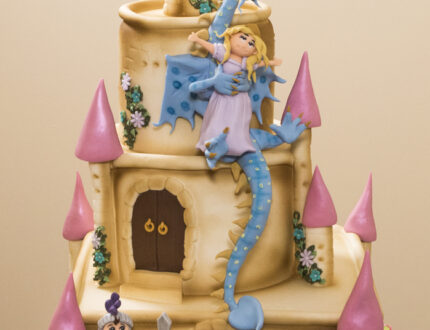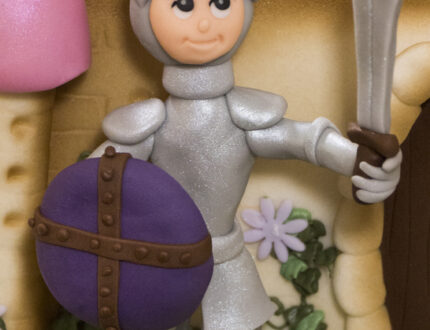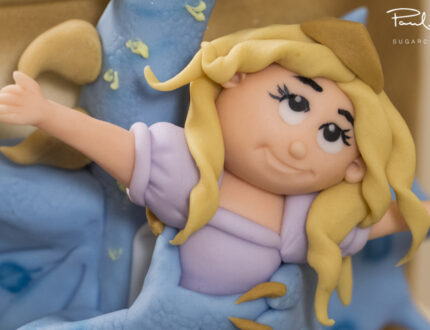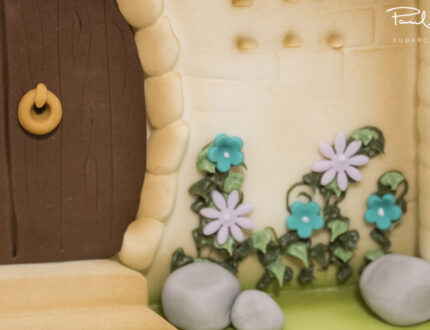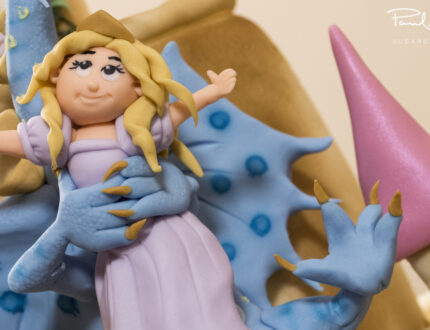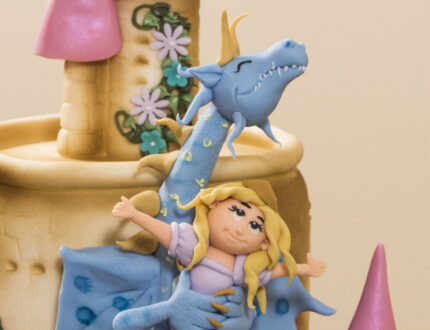Tutorial Preview
1. Castle Detail
Emma kicks things off by adding sausage shaped trim pieces to the edges of each tier and follows this up with turrets and door areas.
2. Castle Detail (Continued)
3. Painting the Castle
4. Painting the Castle (Continued)
5. The Turrets
6. The Flowers
7. Flowers and Stones
8. Making the Structure
Sketches are used to aid with the wire frame ‘skeleton’ of the character, Google image search is also be your friend here if you’re not comfortable with drawing your characters from scratch.
TIP: 16 and 18 gauge wire is used to create the structure for the characters.
9. Dragon Structure
10. Making the Dragon
11. Making the Dragon (Continued)
12. The Princess
13. The Princess (Continued)
14. The Knight
15. Shield and Sword
16. Knight's Face
17. Painting
18. The Hair
19. Airbrushing - Part 1
20. Airbrushing - Part 2
21. Airbrushing - Part 3
22. Finishing Touches
23. Other Ideas
24. Pro Lesson
Learn how to make a Dragon Castle Cake with Emma Ball on CakeFlix with this step by step video tutorial. Emma will guide you through all of the stages of how to transform a three-tier cake into her magical Dragon Castle cake design.
This Dragon Castle Cake Tutorial | CakeFlix is aimed at cake decorators that have an advanced skill level due to the modelling skills involved, but don’t be afraid to take a look and learn with us if you’re not quite at an advanced level as Emma is a great teacher and you’re sure to learn lots. Throughout this course you will learn numerous new skills and techniques that you can apply to other cakes. The course also contains lessons on how to make an incredible dragon sugar model, princess sugar model and our hero – the knight sugar model.
Dragon Castle Cake Tutorial | CakeFlix
A dragon cake background is a popular choice for birthday parties and other special occasions. It can be created using a variety of techniques, including:
-
Fondant:
Fondant is a sugar-based paste that can be used to create a variety of shapes and decorations. To create a dragon cake background, you can roll out the fondant and cut out dragon shapes, or you can use a mold to create more detailed dragons.
-
Gum paste:
Gum paste is a similar sugar-based paste to fondant, but it is more elastic. This makes it ideal for creating 3D decorations, such as dragon wings and tails.
-
Royal icing:
Royal icing is a mixture of sugar, egg whites, and water. It can be used to create a smooth, hard surface, or it can be piped to create intricate designs.
-
Airbrushing:
Airbrushing is a technique that uses a spray gun to apply a fine mist of color to a cake. This can be used to create a variety of effects, including a dragon cake background.
When creating a dragon cake background, it is important to use colors that are appropriate for a dragon. Common colors include green, red, gold, and silver. You can also use a variety of techniques to create a realistic dragon background, such as adding scales, wings, and claws.
Don’t forget to share your interpretations of this wonderful cake with Paul and the rest of the CakeFlix Family on our Facebook group.
View hundreds of more world-class tutorials only at www.cakeflix.com.
